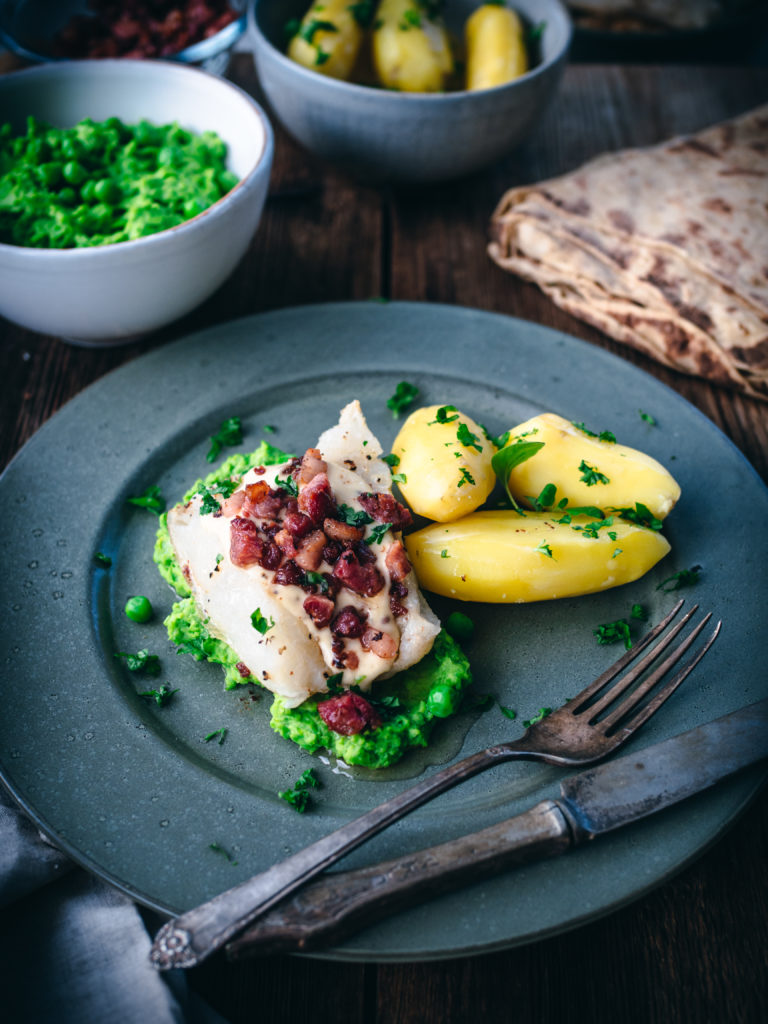
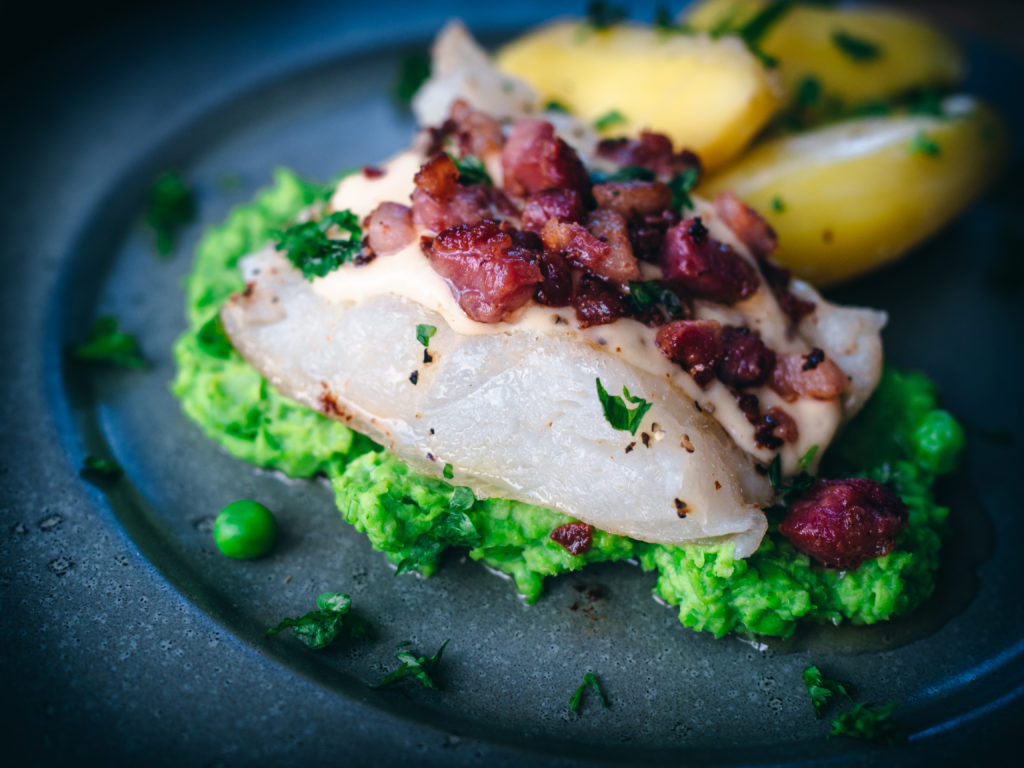
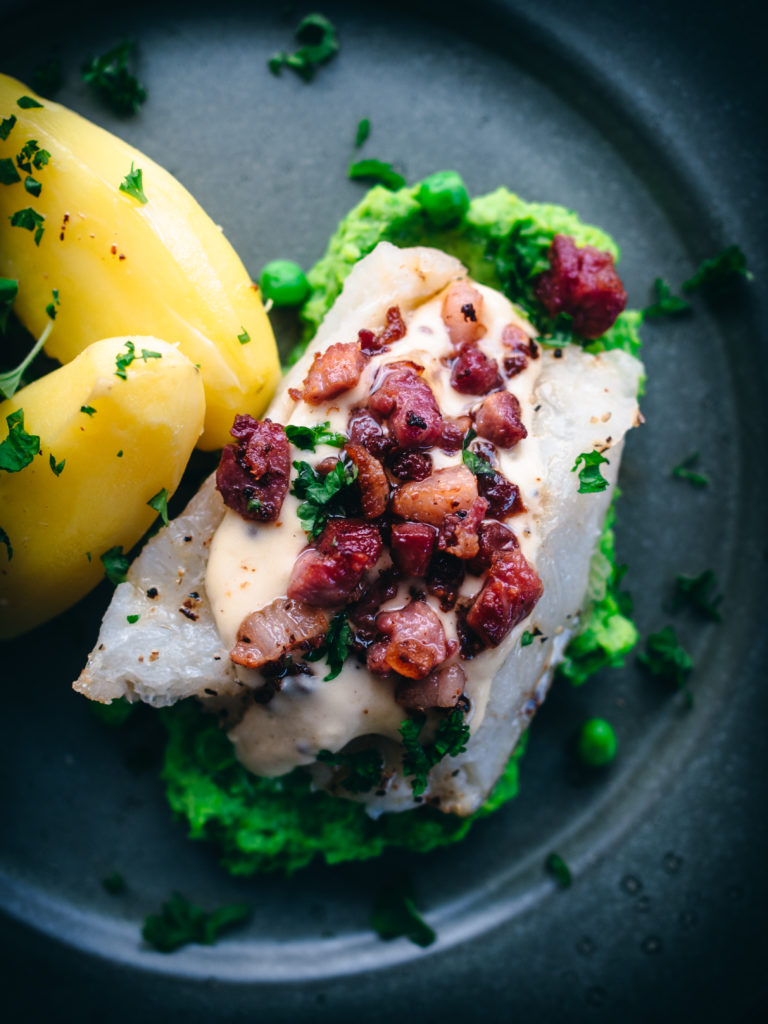
Lutefisk captures the hearts of many and the curiosity of others still. As one of Norway’s traditional Christmas meals, even mentioned as the original Christmas dish, it stands alone in its popularity outside of Norway. In fact, the largest consumption of lutefisk is found in the United States, among relatives of emigrant Norwegians.
Perhaps, one of the reasons it is so beloved lies in its long and interesting history. Lutekfisk starts with dried cod/stockfish (tørrfisk). Dried cod has long been an important commodity in Norway. Those beautiful scenes of fish drying on large wooden racks along the coast are almost as iconic as the fjords.
The dried cod is soaked in cold water to rehydrate it. Afterwards, it is placed in a lye solution then soaked in cold water again. Originally, the lye was made from birch tree ash while today it’s common to use caustic soda.

There are many theories as to where this process originated from. One theory is that a warehouse full of dried cod caught fire. The remaining fish were left in an alkaline ash that got wet in the subsequent rain. The ashes were then washed off and the fish was cooked so they wouldn’t go to waste. Another similar theory is that the drying cod on the racks caught fire. Someone threw water on the rack to put it out and when the ashes became cold, the fish was washed of them and determined to still be edible. The fish was boiled, and it tasted good.
Another theory states that lutefisk was more incidental than accidental. Wood was expensive and boiling dried cod over the fire took time and resources. In order to quicken the process, adding ash or birch in the boiling water would break down the protein chains faster and thus use less wood.
Whatever the case may be, the process was welcomed. The first preparation of lutefisk was described in 1555 by Olaus Magnus, a Swedish clergyman. In 1845, the Norwegian cookbook author Hanna Winsnes suggested adding a little ash and calcium to the cooking water for dried cod to soften it and shorten the cooking time.
Today, lutefisk is still a very popular dish and thought of as a national treasure. It’s enjoyed with a myriad of sides often influenced by the region. The more widespread way to serve it is with boiled potatoes, stewed peas, and fried bacon. Other sides include mustard, potato lefse, syrup, grated brown cheese, gammelost, pork belly fat, salted pork, boiled carrots, mashed rutabaga, and melted butter. Here, I suggest a traditional serving with a creamy mustard sauce as well, but feel free to serve it as desired.
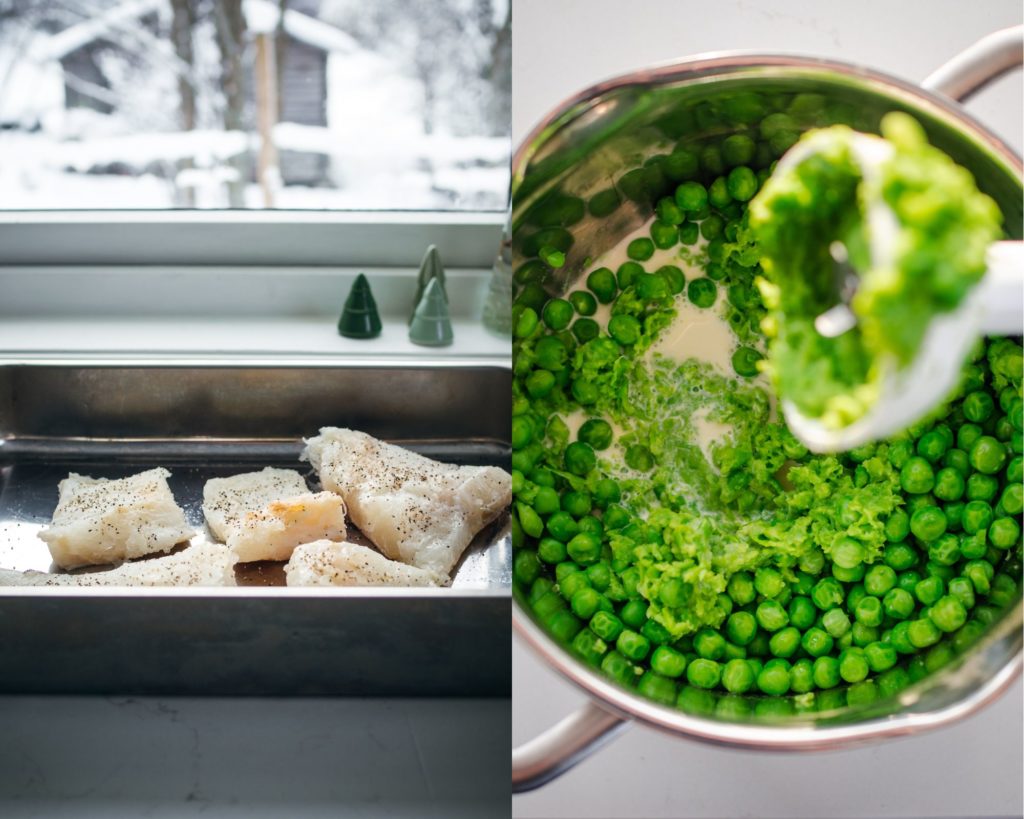
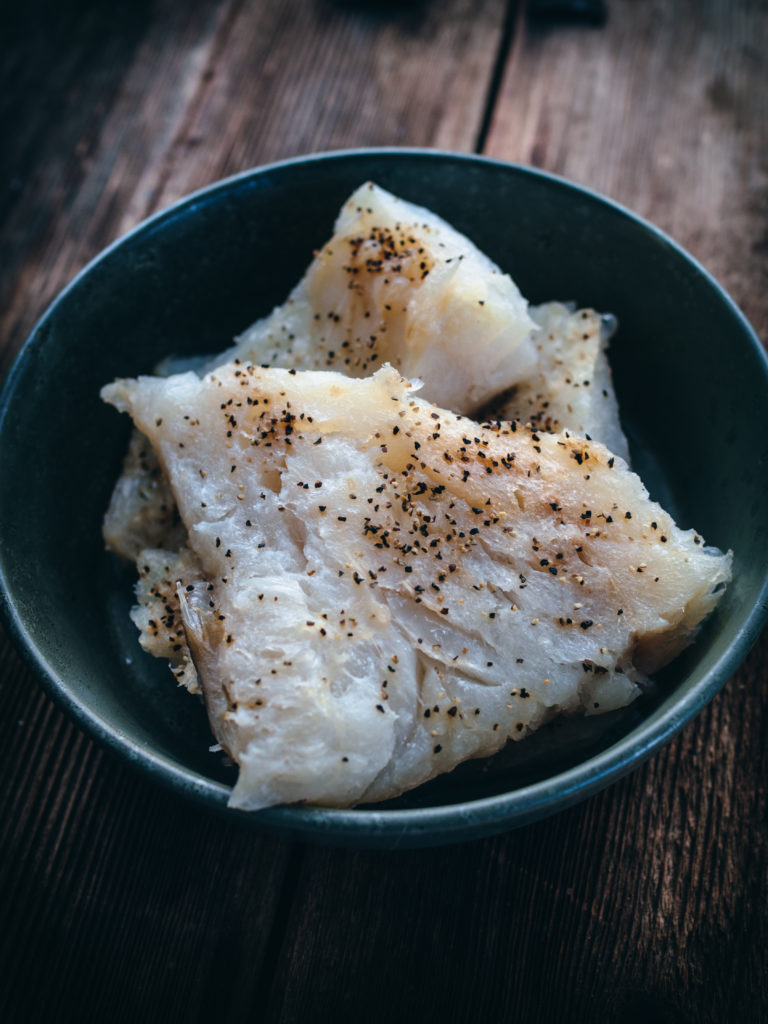
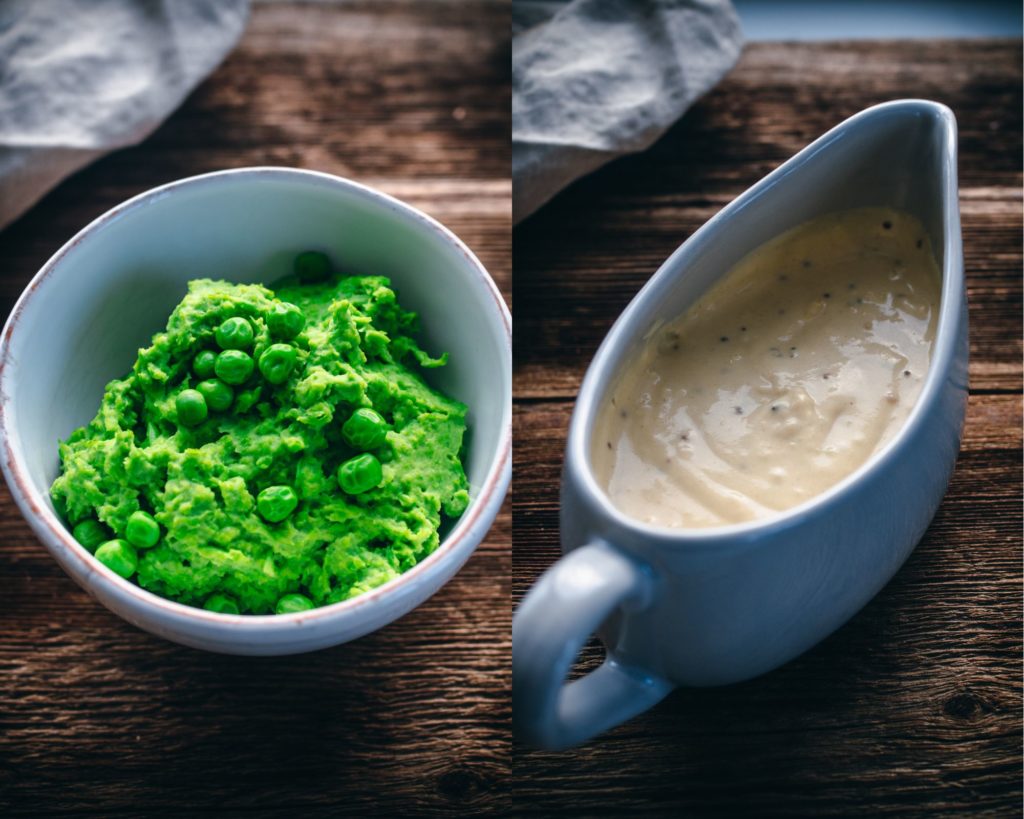
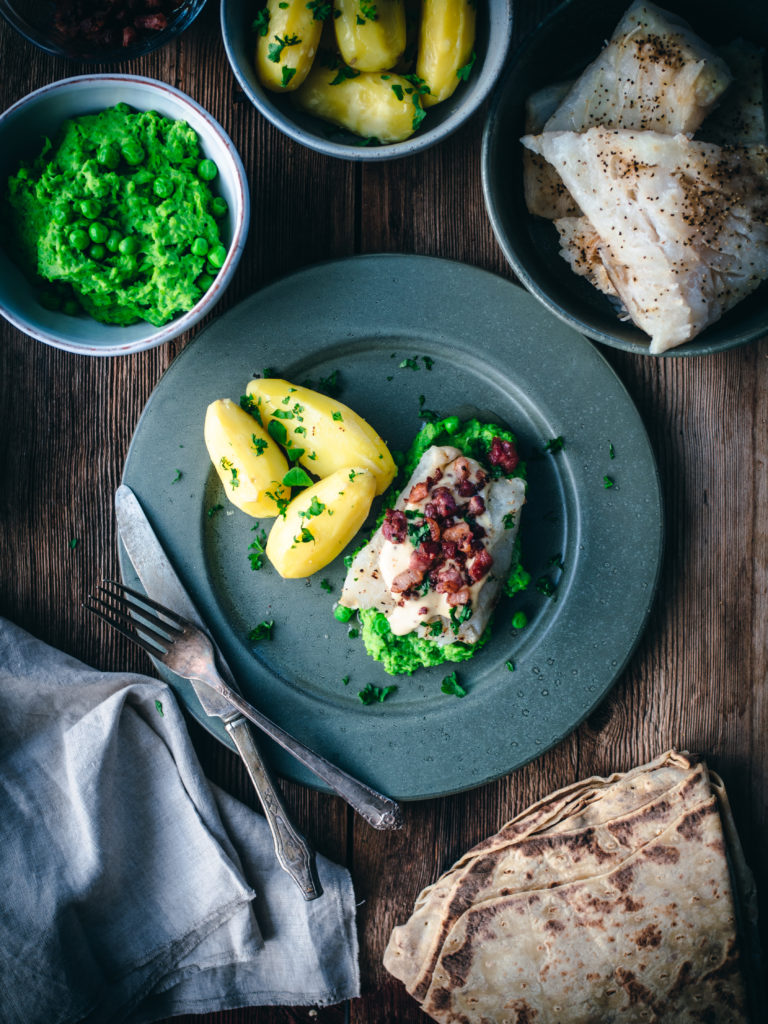
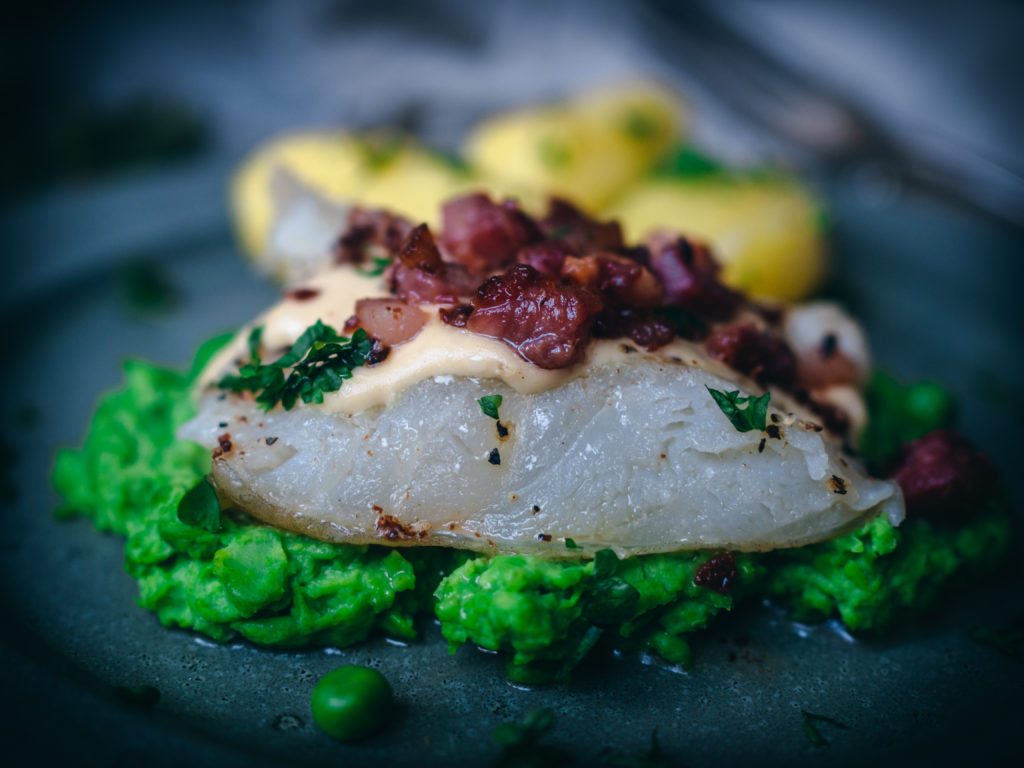
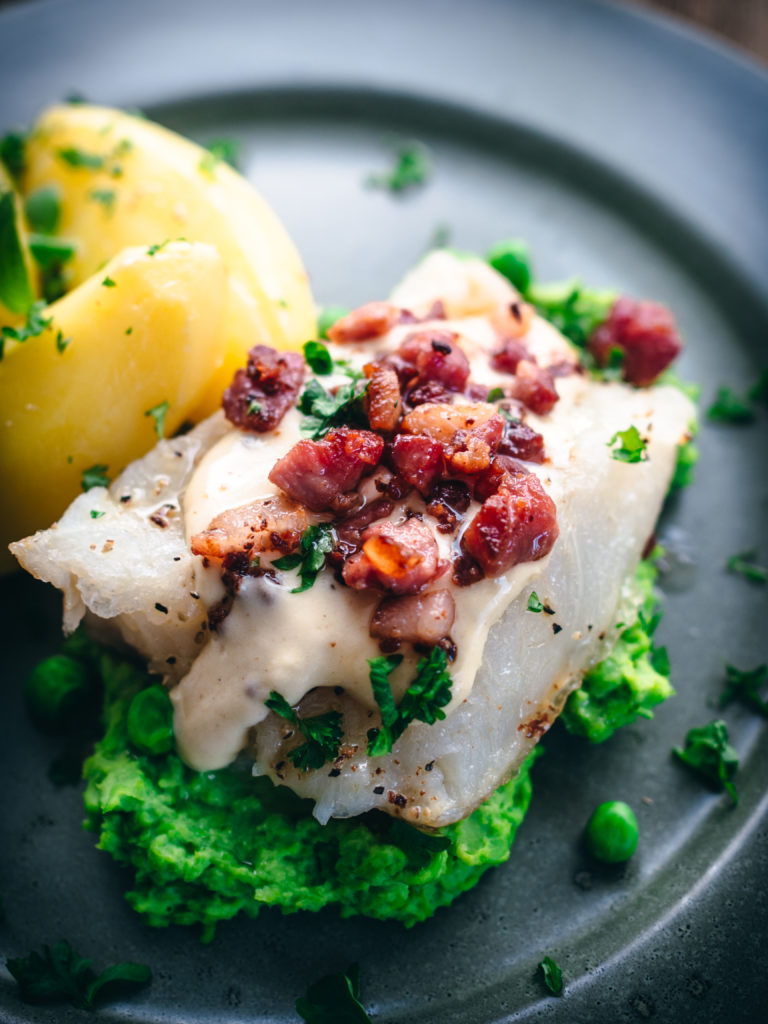
Norwegian Lutefisk
Serves 4
For the lutefisk:
- 4 ½ pounds (2 kg) lutefisk, cut into individual servings
- 1 ½ tablespoons salt, plus more for finishing
- Ground black pepper
For the pea puree:
- 2 cups (480 g) frozen peas
- ¼ cup (56 g) butter
- 1 tablespoon heavy cream
- Salt and pepper
For the creamy mustard sauce:
- 2 tablespoons butter
- 2 tablespoons all-purpose flour
- 1 cup (240 ml) milk
- 1 cup (240 ml) heavy cream
- 2 tablespoons Dijon mustard
- 2 tablespoons whole grain mustard
- Salt and pepper
To serve:
- 1 pound (450 g) bacon lardons, fried until crispy
- Boiled potatoes
- Fresh parsley, to garnish
Place the fish, skin-side down, on top of a metal rack over a roasting pan. Sprinkle 1 ½ tablespoons salt evenly on top of the fish. Cover with foil and place in the refrigerator for 2 hours to give the fish a firmer texture when cooked.
Preheat the oven to 425ºF (220ºC).
Remove the fish from the refrigerator. Rinse the salt off the fish with cold water. Rinse and dry the baking pan, removing the metal rack. Sprinkle the fish with salt and ground black pepper then place back into the roasting pan, skin-side down. Cover the roasting pan with foil, ensuring not to touch the fish. Bake for 30 to 35 minutes, depending upon the thickness of the fish. Serve immediately while hot (the fish cools quickly, so make sure all your sides are ready).
For the pea puree, place the peas in a medium saucepan, cover with cold water, add a pinch of salt and bring to a simmer over medium-high heat. When the peas are warm and tender, drain the water. Add the butter and heavy cream. With a hand blender, puree the peas until somewhat smooth but still a little chunky. Season to taste with salt and pepper. Cover and keep warm until ready to serve.
For the creamy mustard sauce, in a medium saucepan, melt the butter over medium heat. Whisk in the flour and cook for about 1 minute. Gradually whisk in the milk and heavy cream and simmer gently for about 10 minutes or until thickened. Add the Dijon and whole grain mustard and combine. Season to taste with salt and pepper. Cover and keep warm until ready to serve.
To serve, dollop a good amount of the pea puree on a plate and top with a serving of the lutefisk. Drizzle some creamy mustard sauce on top of the lutefisk followed with a good spoonful of the fried bacon lardons. Garnish with fresh parsley and serve boiled potatoes alongside.
Other common sides: mustard, potato lefse, syrup, grated brown cheese, pork belly fat, salted pork, boiled carrots, mashed rutabaga, and melted butter.
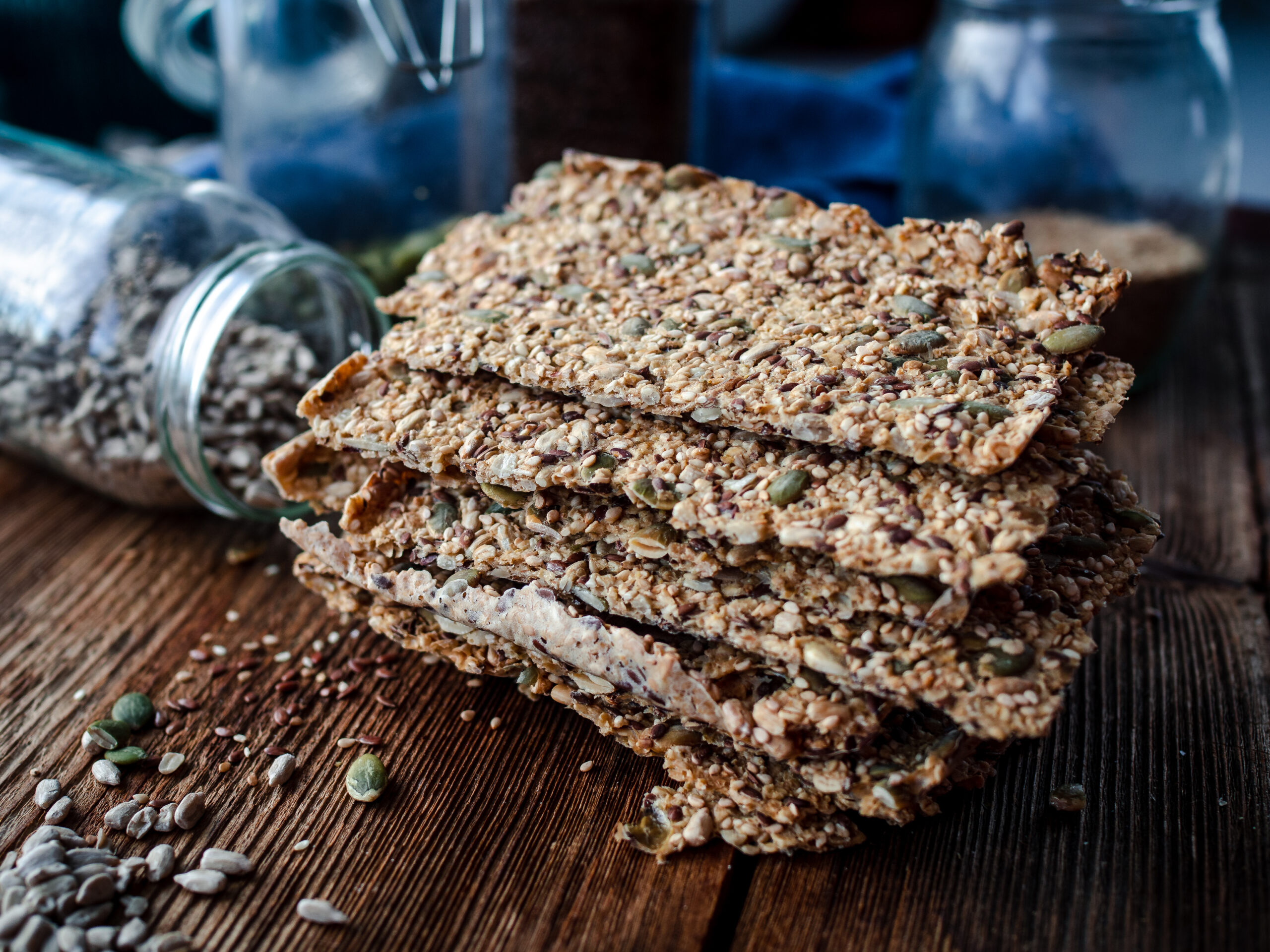
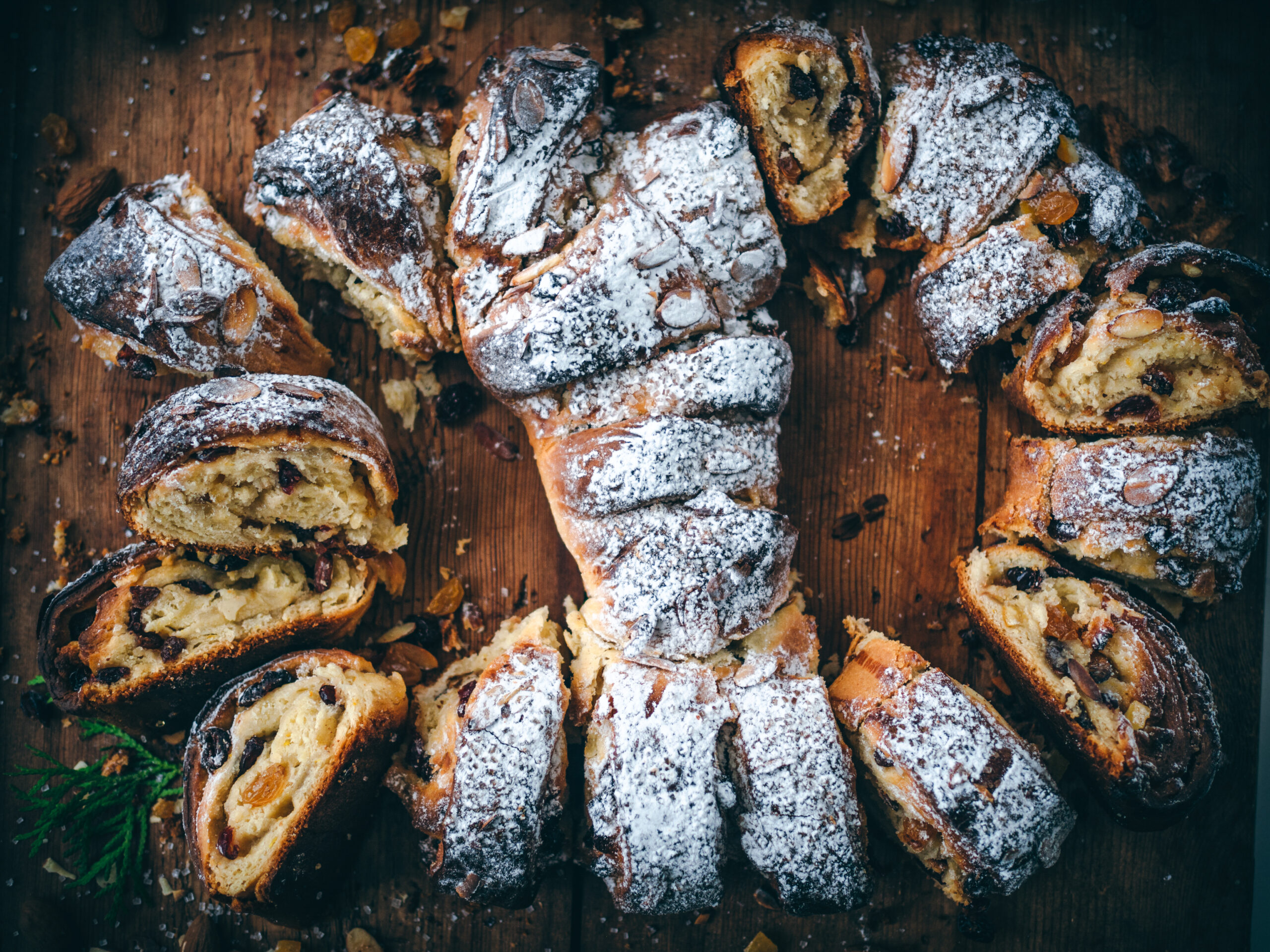
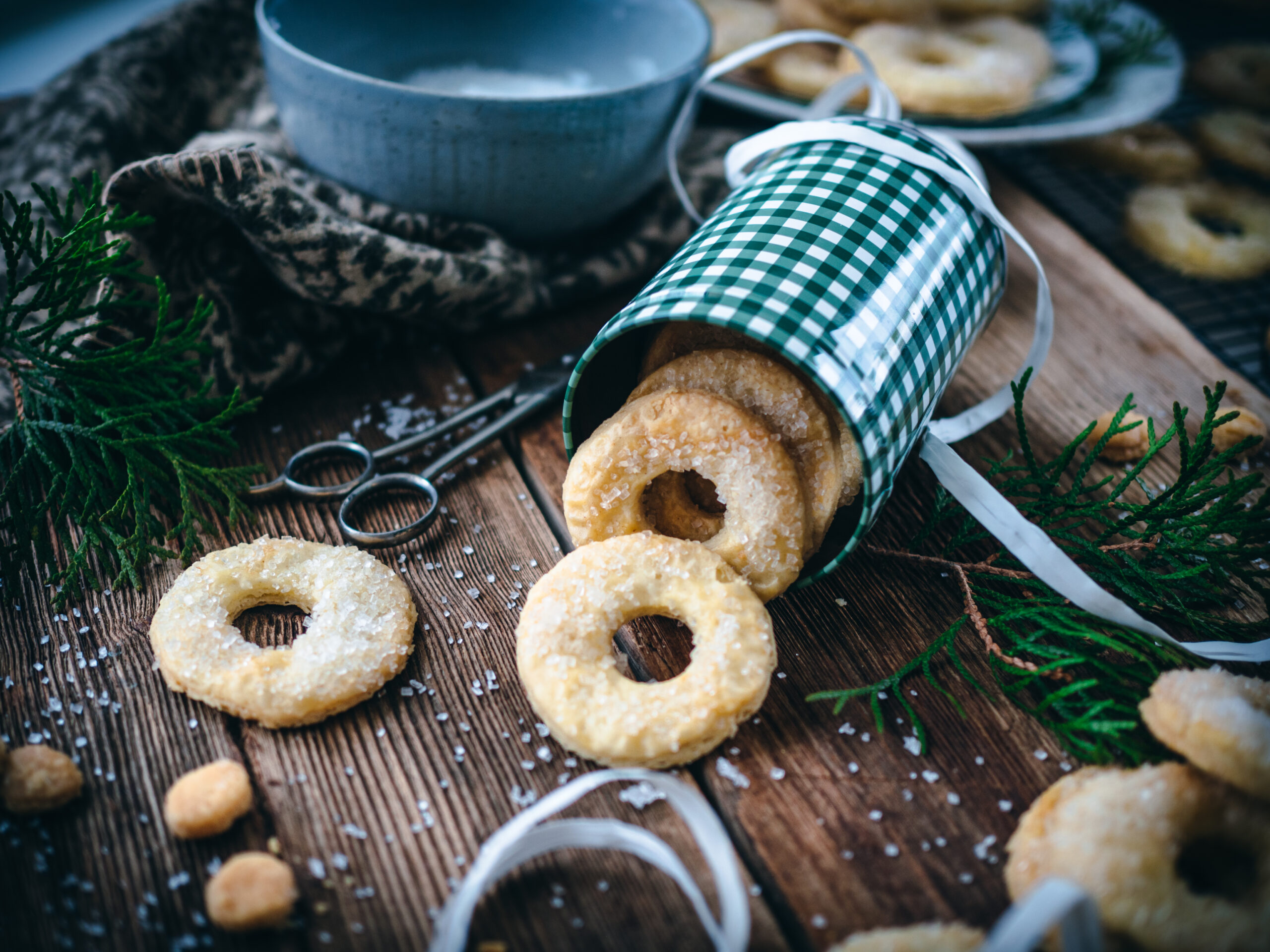
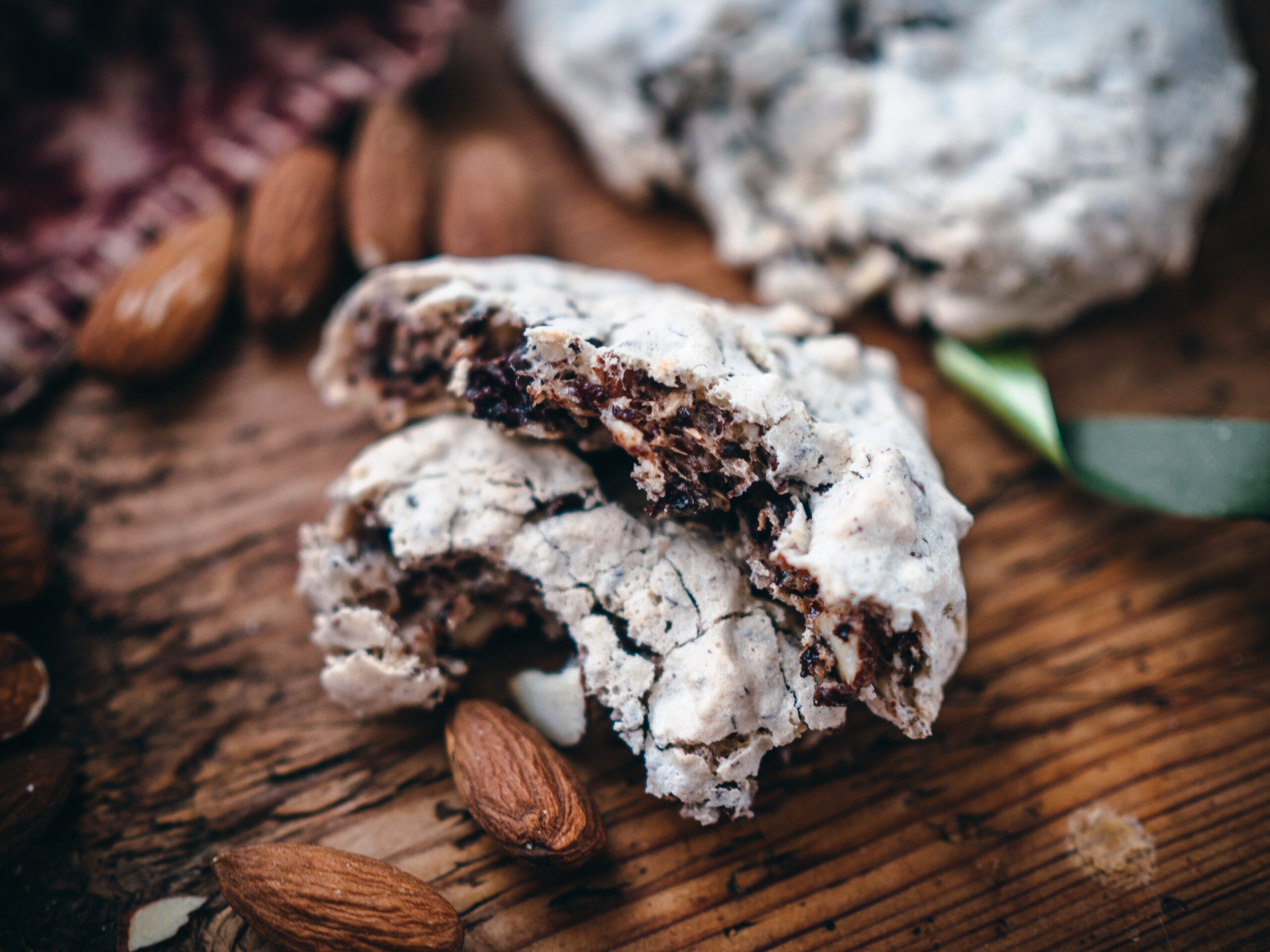

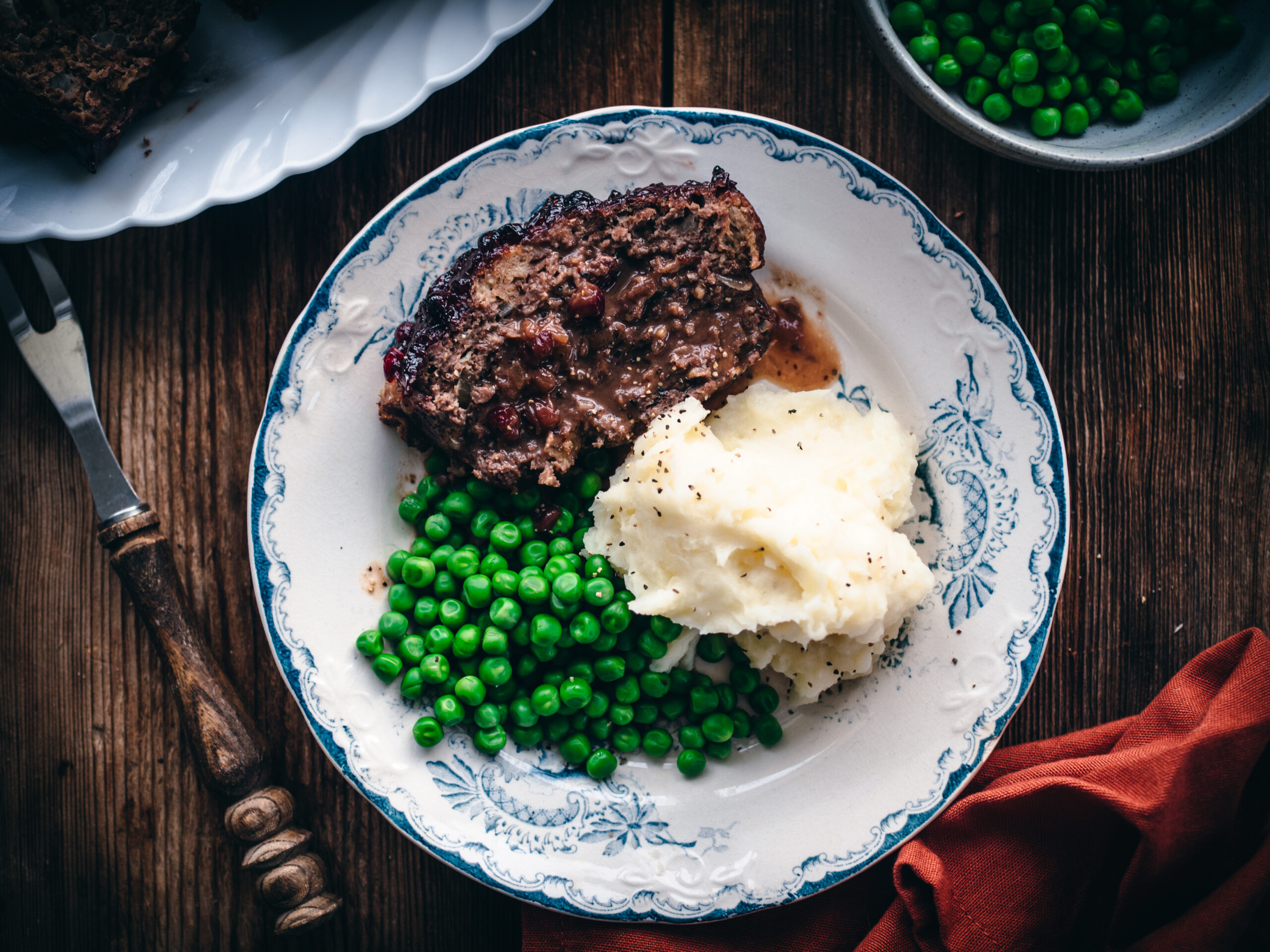
My grandma always poached the lutefisk in a pouch made from old cotton sheeting. This is the only way I’ve ever had it. I’m not sure if I’ve had the authentic experience, because it was not stinky. Actually, it really didn’t have much of a taste or smell.
Hi Nevada,
My mum used to make a dish with dried codfish after visiting Norway. I would like to try this dish, but is this made from fresh fish or dried? If the latter; did you soak it and for how long?
Anxiously waiting for your book to arrive..
Hi Jacqueline! Lutefisk is cured in lye. It sounds like perhaps she did not use this, but rather dried cod and then rehydrated it. See this recipe for how to rehydrate dried cod: https://northwildkitchen.com/baked-salt-cod/. Hope this helps! 🙂
Sooo good! Best lutefisk ever!